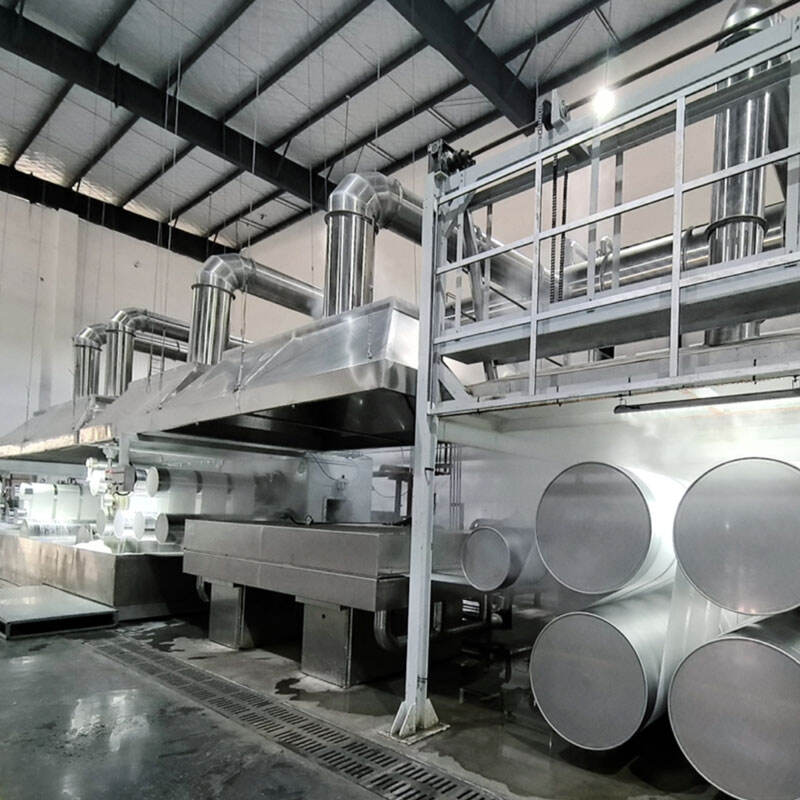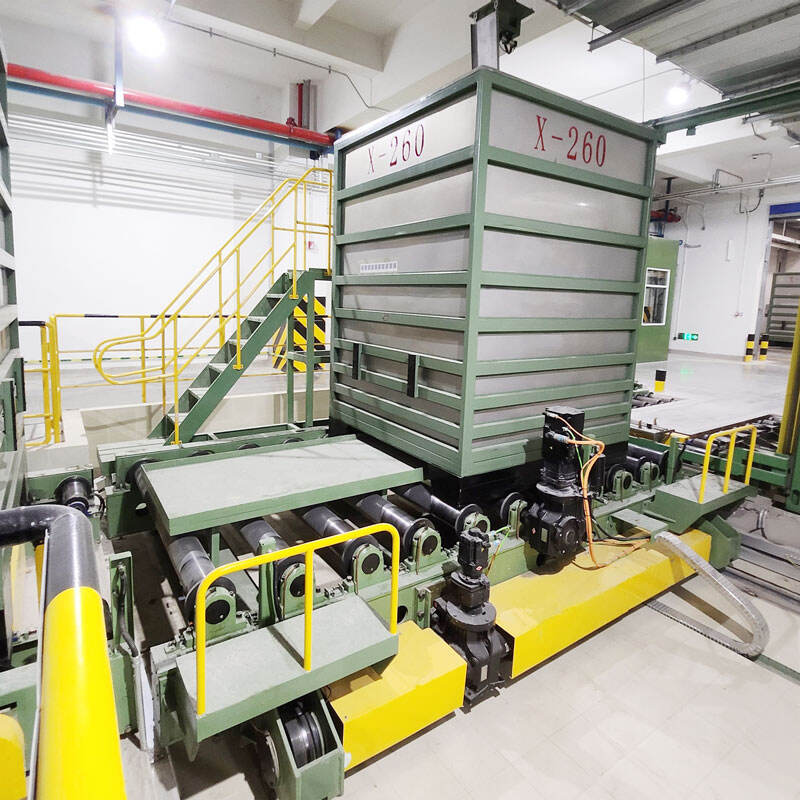In PET fiber production, cost management is crucial for profit maximization and market competitiveness. As the key equipment for manufacturing PET fibers, pet fiber making machines are important for optimizing production efficiency, minimizing waste, and streamlining energy and labor cost. Shenzhen Softgem Technology Co. Ltd, an advanced industrial solutions provider, designs high-performance systems for pet fiber making machines that enable manufacturers to minimize costs while preserving product quality. In this blog, we will discuss the various ways pet fiber making machines help to reduce production costs.
The most significant way in which a PET fiber manufacturing machine decreases production costs is by substantially increasing production efficiency. Contemporary PET fiber manufacturing machines resolve issues in production by means of high-speed components and continuous production design. For instance, advanced machines can manufacture PET fiber at a speed of 800-1,000 meters in a minute, more than quadrupling the production efficiency compared to older alternatives which shuffled between production cycles of 20-30 tons a day. As a result, variable costs like rent, equipment depreciation, and management expenses, can be assigned to a larger number of products, realizing more value than negatives at the end of the production cycle.

Each ton of PET fiber costs 30-40% less to produce. Shenzhen Softgem’s upgraded machine to make PET fiber also has a modular design that reduces downtime in between product specification changes. For example, with modular machines, it takes less than one hour to switch production from 1.5D textile fibers to 10D industrial fibers, while traditional machines require 4-6 hours. This increase in efficiency reduces costs even more, helping to fulfill tight delivery schedules.
**Introduction.** Raw material costs are 60-70% of the total expenses of fiber production. This is why the importance of reducing waste is vital. While older versions of PET fiber making machines will spend 8-12% of raw materials inefficient production, cutting, and breaking fibers. Advanced PET fiber making machines use intelligent monitoring and controlling systems to manage parameters, raw material consumption, and production time.
**Cost Maintenance.** For instance, if a mill is producing a bolt of fiber and detects uneven thickness, the machine will automatically alter the production parameters to eliminate waste. Such systems are the reason manufacturers keep 2-3% raw material waste compared to 8-12% in older systems. Advanced machines, like the ones from Shenzhen Softgem, can handle recycled PET materials like plastic bottles and post-consumer textile scraps making production PET costs less. Removing impurities ensures fiber quality.
**Environmental Benefits.** In addition to lowering production costs, using recycled materials to produce fiber also promotes environmental sustainability as waste materials are 20-25% cheaper. Advanced systems have also integrated environmental sustainability as a focus in production through recycled materials to lower production costs.
Energy consumption in the production of PET fibers is considered a longer-term expense because it is one of the most expensive production costs. This is due to the need to maintain high melting temperatures of PET chips (approx. 260℃) and the consumption of other energy for extrusion, drawing, and winding phases of the process. Older generation pet fiber making machine’s energy consumption was due to the use of inefficient motors, outdated heating systems, and the absence of heat recovery systems. Attention to the adoption of energy-saving innovations in modern pet fiber making machine pays off. For instance, the use of heat recovery systems to utilize waste heat from the melting and heat-setting phases of the Pet Fiber Making Machine to preheat the raw PET chips and warm the production workshop saves 25-35% in energy costs. For example, a Pet fiber making machine with a heat recovery system is likely to save a medium-sized factory 50,000-80,000 kWh of electricity a month. In addition, the Pet Fiber Making Machine manufacturing process uses high-efficiency motors equipped with frequency converters that adjust the power output to production demand. This is done to prevent float idling energy wastage.

Up next, the melting chamber of the pet fiber making machine has enhanced performance because of the use of high-temperature-resistant materials, reducing heat loss to the melting chamber by 15-20%. Energy-optimized pet fiber making machines manufactured by Shenzhen Softgem comply with global energy efficiency regulations, which allows manufacturers to avoid costly monthly energy bill cuts and reduces the risk of environmental regulation non-compliance.
Labor costs represent a large expense in PET fiber production, primarily for the older pet fiber making machines. Such machines justify the costs of 8-12 operators per production line because of the time-consuming, manual tasks of raw material feeding, parameter adjusting, quality checking, and product sorting. In contrast to such older machines, modern pet fiber making machines automate the above tasks and integrate them into a single system, via a centralized platform. This advancement in technology only requires a single operator to manage servo motors commission and control 2-3 machines in a line, thus reducing the labor requirement by 70-80%. For instance, a factory equipped with 3 pet fiber making machine lines only requires 3-4 operators instead of 24-36 workers, thus lowering the yearly labor cost by several hundred thousand yuan. Moreover, the automated in-line quality control makes inspection more reliable by reducing the chances of a defective fiber escaping scrutiny. The ease of operation in Softgem pet fiber making machine comes from the simple interface and automatic fault alerts. New operators on such an advanced machine can learn in 1-2 weeks rather than the 1-2 months typically needed for traditional machines.
*pet fiber making machine* Reduces Maintenance and Downtime Costs
One of the many problems with unplanned downtimes and maintenance is the loss of unrecoverable production and increased expenses. With a pet fiber making machine, every unplanned downtime hour can lead to a loss of 1 to 2 tons of PET fiber. That’s a lot of PET fiber to lose and a tremendous amount of revenue in lost sales to recover. Newer machines built with high-quality, durable components, like wear resistant spinning nozzles and high-strength bearings, are able to minimize these costs and unwanted downtimes. State of the art machines designed with high-strength durable spinning nozzles, that avoid costly maintenance by lasting 6-12 months instead of 2-3 months, and sound pipes that resist the corrosive fluids, drastically reduces maintenance costs by up to 40-50%. In addition, modern machines built with predictive maintenance technology focus on core components management, reducing the likelihood of a machine failure. An example of this would be the worn bearings on the drawing sections of the machine that automatically triggers an alert for the maintenance team to replace it on their schedule, avoiding machine failure.
This helps in decreasing unplanned downtime by 30-40% while also avoiding emergency maintenance costs which are 2-3 times more expensive than scheduled maintenance. Shenzhen Softgem also provides regular maintenance guidance and rapid spare parts supply for its pet fiber making machine, ensuring that repairs are made in no time, thus reducing downtime and losses in production.
 Hot News
Hot News2024-07-25
2024-07-25
2024-07-25